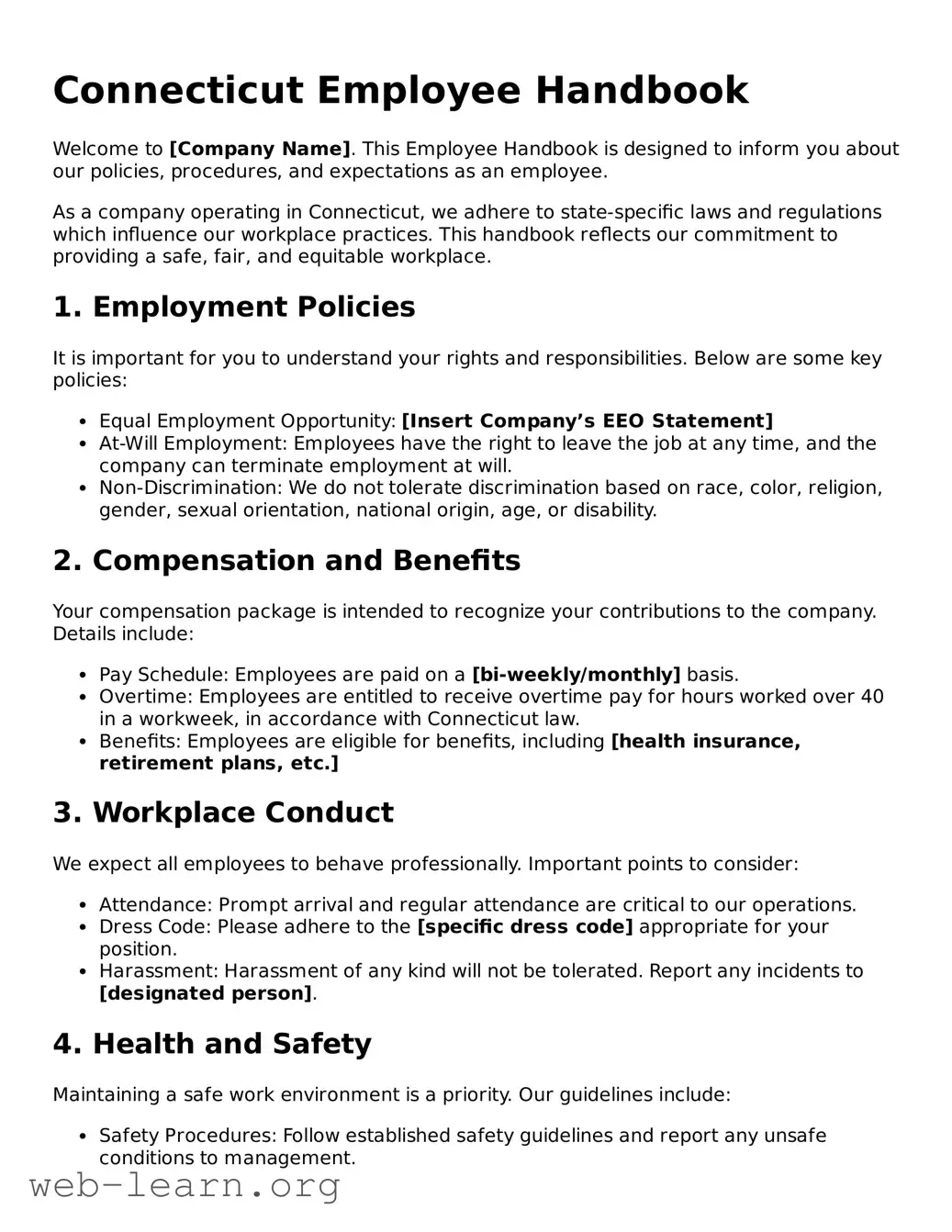Connecticut Employee Handbook
Welcome to [Company Name]. This Employee Handbook is designed to inform you about our policies, procedures, and expectations as an employee.
As a company operating in Connecticut, we adhere to state-specific laws and regulations which influence our workplace practices. This handbook reflects our commitment to providing a safe, fair, and equitable workplace.
1. Employment Policies
It is important for you to understand your rights and responsibilities. Below are some key policies:
- Equal Employment Opportunity: [Insert Company’s EEO Statement]
- At-Will Employment: Employees have the right to leave the job at any time, and the company can terminate employment at will.
- Non-Discrimination: We do not tolerate discrimination based on race, color, religion, gender, sexual orientation, national origin, age, or disability.
2. Compensation and Benefits
Your compensation package is intended to recognize your contributions to the company. Details include:
- Pay Schedule: Employees are paid on a [bi-weekly/monthly] basis.
- Overtime: Employees are entitled to receive overtime pay for hours worked over 40 in a workweek, in accordance with Connecticut law.
- Benefits: Employees are eligible for benefits, including [health insurance, retirement plans, etc.]
3. Workplace Conduct
We expect all employees to behave professionally. Important points to consider:
- Attendance: Prompt arrival and regular attendance are critical to our operations.
- Dress Code: Please adhere to the [specific dress code] appropriate for your position.
- Harassment: Harassment of any kind will not be tolerated. Report any incidents to [designated person].
4. Health and Safety
Maintaining a safe work environment is a priority. Our guidelines include:
- Safety Procedures: Follow established safety guidelines and report any unsafe conditions to management.
- Emergency Procedures: Familiarize yourself with the emergency exits and procedures for different types of emergencies.
5. Acknowledgment of Receipt
By signing below, you acknowledge that you have received and read this Employee Handbook:
Employee Name: ________________________
Employee Signature: ________________________
Date: ________________________
Thank you for being a part of [Company Name]. We look forward to a successful working relationship!
